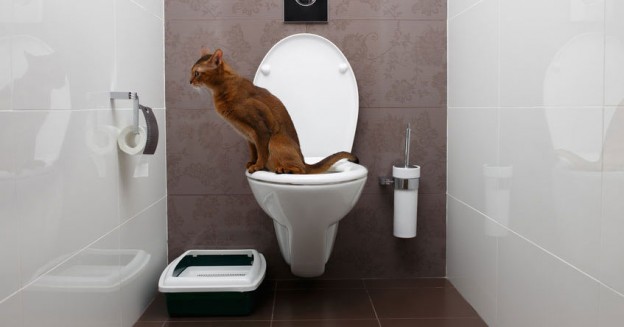Avoid Flush Cat Poop Down Your Toilet - Safeguard Your Pipes Infrastructure
Avoid Flush Cat Poop Down Your Toilet - Safeguard Your Pipes Infrastructure
Blog Article
The article down below involving How to Dispose of Cat Poop and Litter Without Plastic Bags is rather fascinating. Give it a try and draw your own results.
Intro
As cat proprietors, it's essential to be mindful of exactly how we dispose of our feline good friends' waste. While it might seem practical to purge pet cat poop down the toilet, this practice can have harmful consequences for both the environment and human health.
Alternatives to Flushing
The good news is, there are safer and extra responsible ways to take care of cat poop. Take into consideration the following alternatives:
1. Scoop and Dispose in Trash
The most common technique of throwing away pet cat poop is to scoop it right into an eco-friendly bag and throw it in the garbage. Make certain to make use of a devoted trash scoop and throw away the waste immediately.
2. Use Biodegradable Litter
Select naturally degradable feline litter made from materials such as corn or wheat. These litters are environmentally friendly and can be securely gotten rid of in the trash.
3. Hide in the Yard
If you have a lawn, think about hiding cat waste in an assigned area far from vegetable yards and water resources. Make sure to dig deep enough to prevent contamination of groundwater.
4. Install a Pet Waste Disposal System
Purchase a pet waste disposal system specifically made for pet cat waste. These systems make use of enzymes to break down the waste, minimizing odor and environmental impact.
Health Risks
Along with environmental concerns, purging feline waste can likewise pose health threats to people. Cat feces may consist of Toxoplasma gondii, a parasite that can create toxoplasmosis-- a possibly extreme disease, specifically for pregnant ladies and individuals with weakened immune systems.
Environmental Impact
Purging pet cat poop presents damaging pathogens and bloodsuckers right into the water system, positioning a considerable danger to marine environments. These contaminants can adversely impact aquatic life and concession water top quality.
Verdict
Responsible family pet possession prolongs past offering food and sanctuary-- it likewise involves appropriate waste management. By avoiding flushing feline poop down the toilet and opting for alternate disposal approaches, we can decrease our ecological footprint and shield human health and wellness.
Why Can’t I Flush Cat Poop?
It Spreads a Parasite
Cats are frequently infected with a parasite called toxoplasma gondii. The parasite causes an infection called toxoplasmosis. It is usually harmless to cats. The parasite only uses cat poop as a host for its eggs. Otherwise, the cat’s immune system usually keeps the infection at low enough levels to maintain its own health. But it does not stop the develop of eggs. These eggs are tiny and surprisingly tough. They may survive for a year before they begin to grow. But that’s the problem.
Our wastewater system is not designed to deal with toxoplasmosis eggs. Instead, most eggs will flush from your toilet into sewers and wastewater management plants. After the sewage is treated for many other harmful things in it, it is typically released into local rivers, lakes, or oceans. Here, the toxoplasmosis eggs can find new hosts, including starfish, crabs, otters, and many other wildlife. For many, this is a significant risk to their health. Toxoplasmosis can also end up infecting water sources that are important for agriculture, which means our deer, pigs, and sheep can get infected too.
Is There Risk to Humans?
There can be a risk to human life from flushing cat poop down the toilet. If you do so, the parasites from your cat’s poop can end up in shellfish, game animals, or livestock. If this meat is then served raw or undercooked, the people who eat it can get sick.
In fact, according to the CDC, 40 million people in the United States are infected with toxoplasma gondii. They get it from exposure to infected seafood, or from some kind of cat poop contamination, like drinking from a stream that is contaminated or touching anything that has come into contact with cat poop. That includes just cleaning a cat litter box.
Most people who get infected with these parasites will not develop any symptoms. However, for pregnant women or for those with compromised immune systems, the parasite can cause severe health problems.
How to Handle Cat Poop
The best way to handle cat poop is actually to clean the box more often. The eggs that the parasite sheds will not become active until one to five days after the cat poops. That means that if you clean daily, you’re much less likely to come into direct contact with infectious eggs.
That said, always dispose of cat poop in the garbage and not down the toilet. Wash your hands before and after you clean the litter box, and bring the bag of poop right outside to your garbage bins.
https://trenchlesssolutionsusa.com/why-cant-i-flush-cat-poop/

We were shown that report about How to Dispose of Cat Poop and Litter Without Plastic Bags from an acquaintance on another website. In case you liked our post kindly remember to pass it around. I praise you for your time. Visit us again soon.
Request Free Estimate Report this page